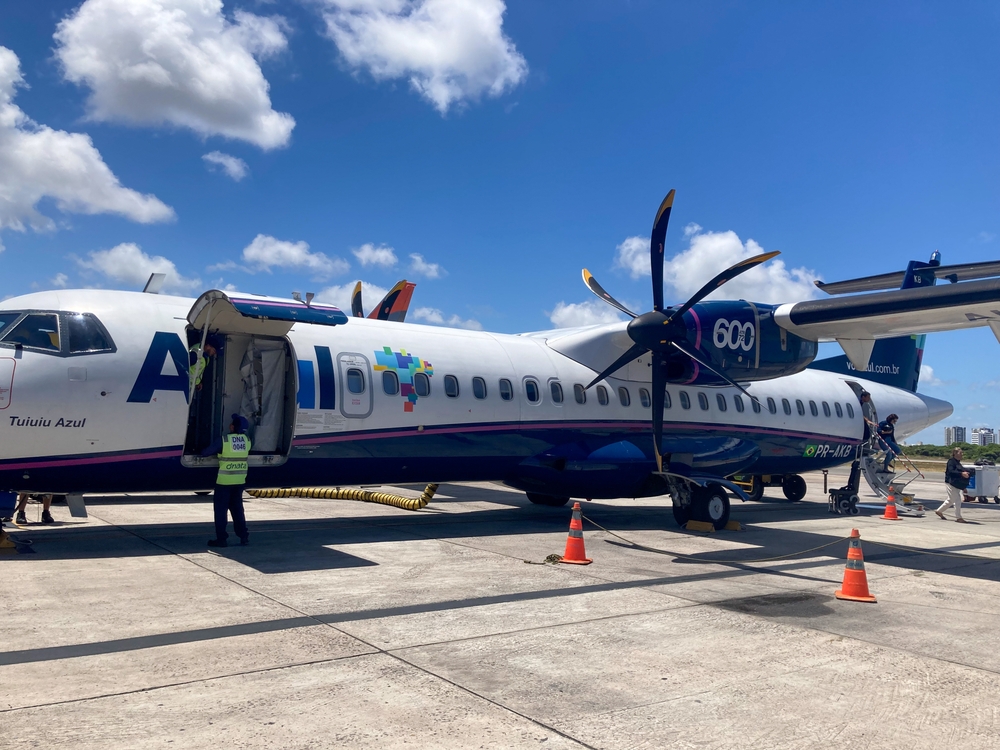Brazil’s third-largest airline, Azul Linhas Aéreas (Azul), has announced it filed for Chapter 11 bankruptcy protection in a New York court on May 28, 2025, as the company struggles with a debt burden that is reported to have reached $5.56 billion. With the filing, Azul joins local airline rivals GOL and LATAM that have both utilized the protection of US bankruptcy courts in recent years to reorganize their finances.
According to The Rio Times, the filing follows months of negotiations with creditors and investors, including prearranged commitments from United Airlines and American Airlines to inject between $100 to $150 million each once the Brazilian airline has successfully completed a financial restructuring process.
Azul’s overall debt situation is said to have risen rapidly in the past few months alone, coinciding with national currency volatility, rising US interest rates, and widespread operational disruptions from global supply-chain delays, all compounding the issues being faced by the carrier. Azul’s debt surged by 50.3% in the first quarter of 2025 versus the same period in 2024 as its cash reserves plummeted. These are reported to have fallen by 51% to $118 million in the first part of 2025, while lease payments and debt servicing reached $1.31 to $1.38 billion annually.
While Azul enacted the first stage of a major restructuring plan in January 2025, the move, which is reported to have eliminated $1.6 billion of debt through a process of equity swaps with aircraft lessors and bondholders, appears not to have been enough to avoid a Chapter 11 filing. The filing will allow the carrier some relief from creditors while it continues the process of reorganizing its finances to turn the company’s fortunes around.
As part of the bankruptcy process, it is understood that creditors have agreed to convert $784.6 million of debt into preferred shares and extend $780 million in maturities to 2029 to 2030, while a $525 million capital infusion aims to stabilize operations. Bondholders and lessors will collectively control 45% of equity post-restructuring, leaving existing shareholders with diluted stakes.
Fleet issues
One of the key issues that has affected Azul is the grounding of multiple aircraft that are powered by Pratt & Whitney engines, which have become the subject of additional maintenance checks, while a lack of spare parts is hampering attempts to get these aircraft back in the air. According to ch-aviation, the airline operates a fleet of 192 aircraft, which includes 59 Airbus A320 family narrowbodies and 12 A330 widebodied aircraft. Of these aircraft, six are currently shown as inactive.
The airline also has 35 Embraer E2s and 44 ERJ-190s on its books, although 27 are listed as parked. For regional operations, the carrier has a fleet of 42 ATR turboprops, although 15 are listed as parked.
Alongside the aircraft shortage caused by the grounding of its own aircraft, the airline has been forced to lease aircraft from other operators to cover its flying program. However, this too has caused issues with huge leasing costs being incurred alongside the use of foreign carriers, attracting the wrath of Brazilian labor unions. Likewise, the airline has prioritized fleet modernization by planning to integrate 15 fuel-efficient Embraer E195-E2 jets by late 2025.to help with its aircraft shortfall.
With court approval, Azul expects to see minimal additional disruptions to its operations while it undergoes its restructuring, taking a similar approach to that of GOL in 2024/25 and LATAM’s 2022 exit from bankruptcy. It is understood that the merger talks with GOL have been paused while the process of financial restructuring is undertaken.
Speaking about the agreement with the two US airlines, aircraft leasing companies, and other creditors and bondholders, John Rodgerson, Chief Executive Officer of Azul, said, “Azul continues to fly – today, tomorrow, and into the future. These Agreements mark a significant step forward in the transformation of our business – one that enables us to emerge as an industry leader in the main aspects of our business.”
“With a collaborative approach and the support of our stakeholders, we have made a strategic decision to pursue a voluntary financial restructuring as a proactive move to optimize our capital structure, which was burdened by the COVID-19 pandemic, macroeconomic headwinds, and aviation supply chain issues. Our strategy is not just about financial reorganization. By using this process, we believe that we are creating a robust, resilient, industry-leading airline – one that customers will continue to love flying, at which crewmembers will continue to love working, and that will create value for our stakeholders.”




